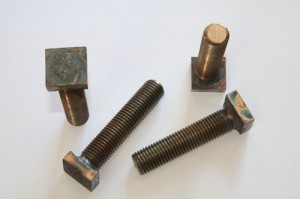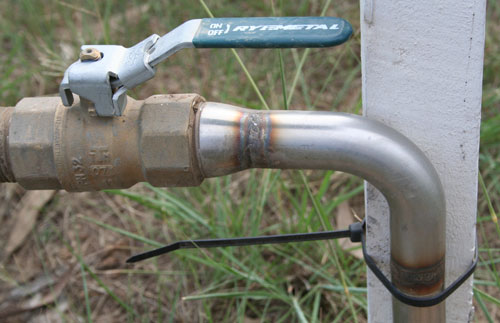Passivated stainless steel as shown
CORROSION RESISTANCE
The Galvanic chart, sometimes known as the Galvanic scale (Shown below) gives an indication of the relative corrosion rate of metals. When corrosion occurs with the use of two or more dissimilar metals, the metal closest to the anode (bottom of the chart) and furthest away from the cathode (top of the chart) will, in general, be the metal to corrode first.
One method of corrosion control is to select a metal closer to the Cathode, and further from the anode.
Many metals naturally produce an oxide when in contact with air, forming a natural barrier to corrosion.
In manufacturing, welding, and machining Stainless Steel products, chromium oxides can form on the metal surface, creating an active Stainless Steel, (refer to the Galvanic chart). This active Stainless Steel has dropped down the chart, and has less protection to rusting and general corrosion than passive Stainless Steel
This prevents the formation of a natural oxide barrier to corrosion.
At HydroMet, all Stainless steel products are passivated after manufacture, both internally and externally.
This Passive, or passivated Stainless Steel then allows the formation of natural oxides, moving the metal further up the Galvanic Scake, away from the corroded end, towards the protected end.
Thus, with all HydroMet manufactured Stainless Steel products, you can be assured of the highest possible degree of both internal and external corrosion resistance.
Galvanic Chart as shown
PROTECTED END (CATHODE, – ) MOST NOBLE
Platinum
Gold
Graphite
Silver
18-8-3 Stainless Steel type 316 (passive)
18-8 Stainless Steel type 304 (passive)
Copper
Aluminium Bronze
Bronze
Brass
Nickel (active)
Tin
Lead
18-8-3 Stainless Steel type 316 (active)
18-8 Stainless Steel type 304 (active)
50-50 Lead- Tin Solder
Cast Iron
Wrought Iron
Mild Steel
Aluminum
Galvanised Steel
Zinc
CORRODED END (ANODE, + ) LEAST NOBLE


HydroMet 316 Stainless Steel square headed bolts after manufacture, prior to passivation.
In this state, the metal is active if used in service, with a shortened life expectancy. The metal is much lower on the galvanic scale than it should be.
HydroMet 316 Stainless Steel square headed bolts after passivation.
The metal has now risen up the galvanic scale, and a much longer life is expected.


Examples of fairly new Stainless Steel pipework that has not been passivated prior to installation.


